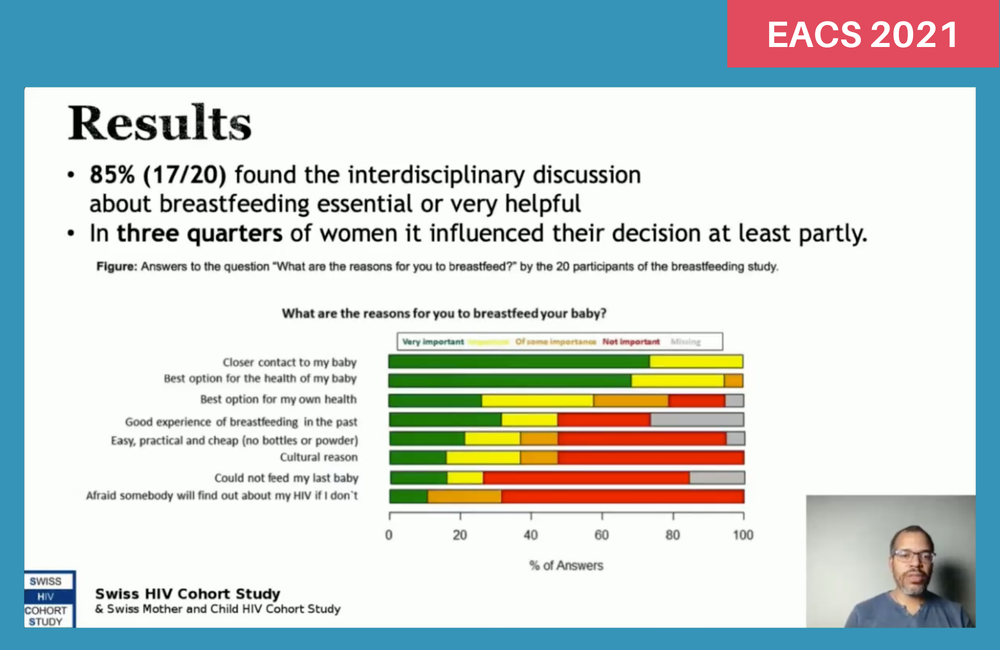Breastfeeding Issues In Hiv Mothers
Breastfeeding not only provides babies with the nutrients they need for optimal development but also gives babies the antibodies they need to protect them against some of these common but deadly illnesses. Because of the very low risk of mother-to-child HIV infection BHIVA guidelines advise that mothers who choose to breastfeed should be supported to do so.
![]()
How Is Hiv Transmitted From Mother To Baby Avert
Breastfeeding is a major health-promoting factor for infants and children in developing countries but the risk of mother-to-child transmission MTCT of HIV by this route is challenging traditional practices and health policies in low-resource countries.

Breastfeeding issues in hiv mothers. In settings where national authorities recommend breastfeeding HIV infected mothers and or their babies should be given antiretroviral treatment or prophylaxis to reduce the risk of transmission throughout the breastfeeding period. The only intervention to completely prevent HIV transmission via human milk is not to breastfeed in the United States where clean water and affordable replacement feeding are available the American Academy of Pediatrics recommends that HIV-infected mothers not breastfeed their infants regardless of maternal viral load and antiretroviral therapy. HIV-infected mothers in developed countries almost universally do not breastfeed their infants because of an 15 risk of HIV infection being transmitted in breast milk particularly the cell-rich colostrum fraction of breast.
A plugged duct happens when a. If you are a woman living with HIV taking antiretroviral treatment correctly during pregnancy and breastfeeding can virtually eliminate the risk of passing on the virus to your baby. For many expectant mothers breastfeeding is an important part of their mothering and a mother diagnosed with HIV is no exception.
In the practice of breastfeeding an seo consultant the renting or selling of breastfeeding pumps and supplies is particularly troubling. The breastfeeding of infants born to HIV-infected mothers is a subject of continuing debate among developed and developing populations in the world. Breastfeeding is the standard of care in low-resource settings where it has been consistently demonstrated to promote the overall survival and well-being of HIV-exposed infants with an extremely low risk of HIV transmission when the breastfeeding parent has.
Most children born to HIV-positive mothers and raised on formula do not die of AIDS but of under-nourishment diarrhoea pneumonia and other causes not related to HIV. Under normal circumstances breastfeeding wouldnt be a concern. These mothers should exclusively breastfeed their babies for the first 6 months of life then introduce appropriate complementary foods with.
The demographic characteristics of participants are shown in Table 1. In early 2013 the American Academy of Pediatrics published revised recommendations to support breastfeeding by HIV-positive mothers when mothers are adherent to ART achieve an undetectable viral load and practice exclusive breastfeeding for the first six months and the health of mother and baby are closely monitored and optimised. If you had tummy problems you must contact your HIV clinic before breastfeeding.
To breastfeeding 2 days 48 hours after your breast problem is healed. National HIV infection rates amongst pregnant women are 1500 nationally and 1250 in London. All mothers living with HIV who chose not to practice breastfeeding were excluded from the study.
In the world of breastfeeding commercialism or the marketing and sale of products for profit independent of health care practitioners has become a major force and often brings a great deal of marketing pressure on breastfeeding mothers and. In comparison in the absence of any intervention rates of HIV transmission from a HIV-infected mother to her child during either pregnancy labor delivery or breastfeeding historically have ranged from 15 to 45 percent according to WHO. In the United States to prevent HIV transmission HIV-infected mothers should not breastfeed their infants.
You should only breastfeed your baby if your HIV. In another meta-analysis of six studies in low-income settings where mothers started treatment before or during pregnancy post-natal HIV transmission rates of 108 were estimated at 6 months with higher rates from mothers who started ART in the later stages of pregnancy when they would be less likely to have achieved viral load suppression during breastfeeding. Breastfeeding also sometimes leaves nipples sore or cracked or breasts can become engorgedwhich are not only uncomfortable conditions for the mother but may increase the risk of transmitting HIV to the infant.
Mother-to-child transmission can occur during pregnancy birth or breastfeeding. Rates of hepatitis B hepatitis C and herpes simplex virus HSV also run high in women with HIV. The longer an HIV-infected mother breastfeeds the greater the risk for HIV transmission to the infant.
For the last decade the policy in Uganda had been to advise HIV-positive mothers to exclusively breastfeed for three months. However cART radically improves HIV prognosis and virtually eliminates. A plugged milk duct feels like a tender and sore lump in the breast.
But in women with HIV it can significantly increase the risk of transmission to your baby. Currently 72 of all HIV-positive mothers living in the UK were born in Africa particularly in East and Southern Africa. The conditions are that mothers follow the antiretroviral therapy ART strictly and that standard HIV tests show consistently undetectable levels of the virus in the mother.
HIV is a virus that attacks the bodys immune system and is spread through certain body fluids including breast milk. Doctors in North America first discovered that a woman with the virus could pass it on in breast milk in 1985. Attending antenatal appointments means you.
Maternal and infant factors contributing to the risk of MTCT through breastfeeding are still. If HIV-positive women are formula feeding they are not expected to take an HIV viral load test more often than they would normally. No virus If the HIV virus in your blood is detectable there will be HIV in your breast milk and HIV will enter your babys body on feeding.
Plugged ducts are common in breastfeeding mothers. A pregnant woman living with HIV can pass on the virus to her baby during pregnancy childbirth and through breastfeeding. Swiss HIV guidelines were revised in 2019 to offer mothers a discussion of the risks and benefits of breastfeeding allowing them to make a choice between formula feeding and breastfeeding.
Numerous mothers regardless of their HIV status struggle with breastfeeding while they work outside the home or take care of. Half of the children with HIV in sub-Saharan Africa today were infected with the disease through breast milk from their HIV-positive mothers. The inclusion criteria were a breastfeeding mothers living with HIV b receiving ART in the location where this study took place with c infants younger than 1 year.
But phone calls during a television talk show on the benefits of breastfeeding exposed the confusion among HIV-positive mothers about the new recommendations. Soon Western women with HIV were being strongly advised not to breastfeed. To help eliminate perinatal HIV transmission the US Department of Health and Human Services recommends against breastfeeding for women living with HIV regardless of viral load or combined antiretroviral therapy cART status.
Qualitative studies mainly from the UK and Canada have found that the recommendation not to breastfeed can be a complex recommendation in the context of breast is best and that it may raise unique concerns and challenges for mothers living with HIV 19 21 38 39. Decisions on whether or not HIV-infected mothers should breastfeed their infants is generally based on comparing the risk of infants acquiring HIV through breastfeeding with the increased risk of death from malnutrition diarrhoea and pneumonia. If you have a fever or other symptoms then you probably have a breast infection rather than plugged ducts.

Ten Safer Breastfeeding Rules For Women Living With Hiv Aidsmap

Women Living With Hiv In High Income Settings And Breastfeeding Moseholm 2020 Journal Of Internal Medicine Wiley Online Library

Risk Factors For Hiv Transmission During Breastfeeding Download Table

Half Of Swiss Mothers With Hiv Decide To Breastfeed Their Baby When Given The Choice Aidsmap

Breastfeeding With Hiv Eliminating The Misperceptions Borgen
Posting Komentar untuk "Breastfeeding Issues In Hiv Mothers"